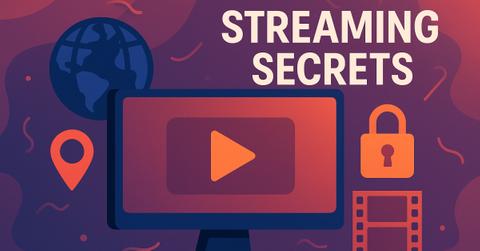Streaming Secrets: How Viewers Are Accessing Global Content Before It’s Released Locally
Waiting weeks or months to see content that others are already enjoying is no longer acceptable to fans.
Published June 26 2025, 3:16 p.m. ET

The internet is buzzing and everyone is raving about a must-watch series that isn't yet available in your country, but you finally hear about it. Fans are already posting reaction videos, quoting lines, and sharing spoilers online for some reason. How do they watch it in your area before it even drops?
It's not that difficult to answer. Viewers worldwide are coming up with inventive ways to get around regional restrictions and release delays. The need for instant access is growing along with the globalization of entertainment. Waiting weeks or months to see content that others are already enjoying is no longer acceptable to fans.
The Global Content Divide
Geographically-based release schedules are still used by film studios and streaming services. The same show frequently becomes available at different times in different countries due to licensing agreements, market strategies, and legal frameworks. This can irritate ardent viewers. Why should a Singaporean moviegoer have to wait three weeks longer than a Canadian to see the same film?
The fact that complete catalogs might be absent from a platform's version in one area is even more perplexing. Despite their similar appearances, Netflix US and Netflix UK frequently have very different selections of titles. Regional rights, not technology, are the driving force behind these disparities.
This is where savvy viewers step in. Many have found that if they download a VPN for Windows on their PC, they can access streaming catalogs in other countries by changing their virtual location. It is not just about speed. It is about unlocking access.
A Shift in Viewing Habits
Today’s entertainment consumer is no longer just a passive viewer. According to an article from Arizona State University, people are redefining how they engage with film and series content. Streaming has shifted viewing from communal, in person experiences to personal, mobile, and often solitary activities.
More than that, though, consumers are now curators. They decide what, when, and how to watch, and more and more, where. People are creating their own global viewing library by employing various tools and techniques. The demand for borderless content is rising, whether it's watching an independent French film that's not available in the US or watching the newest Korean drama before its local premiere.
Regional Blocks Create Global Frustration
It's not just about early access. Some viewers' access to certain content is permanently blocked due to their residence. Well-known websites like HBO Max, BBC iPlayer, and Hulu frequently only function in a few nations. In certain areas, even YouTube limits videos.
As a result, there is a feeling of digital inequality. Depending on where they log in, two users who pay comparable subscription fees might get quite different value. Viewers' desire to level the playing field is understandable.
Streaming Beyond Borders
A workaround turned into a trend. Cross-border streaming is no longer just for techies. Anyone can now explore content from around the globe with simple tools without having to know how DNS or proxy servers work.
In a thoughtful piece on global film distribution models, Dylan Sidoo explains how the rise of streaming platforms has forced the entertainment industry to rethink old systems. The article highlights the challenges of licensing, but also the incredible potential for content creators to find audiences far beyond their own borders.
Viewers are not waiting for the industry to catch up. They are taking the lead in redefining access.
The Fan Communities Behind It All
The fan community is another underappreciated component of the global streaming ecosystem. Fans are setting the standard, whether it is through TikTok creators demonstrating how to switch regions, Reddit threads sharing international release schedules, or Discord servers organizing live watch parties across time zones.
Piracy is not what this is. Passion is what this is. Fans aren't attempting to evade payment. The majority already have subscriptions; their exclusion merely irritates them. If it means having access at the same time as the rest of the world, many are willing to pay more.
Streaming services ought to see this as an opportunity rather than a threat. There is a clear and growing demand for content that transcends borders.
A Sign of What’s to Come
Rather than resisting global access, those who embrace it will probably be the ones driving the next wave of streaming success. The one-size-fits-all release model will not be viable as audiences become more varied and entertainment becomes more decentralized.
Simultaneous global drops have already been tested by a few platforms. Others are investigating models of hybrid licensing. However, viewers are filling in the gaps for the time being.
Final Thoughts
Entertainment is not only going to be digital in the future. It is worldwide. Viewers will continue to find innovative ways to take charge as long as catalogs, release dates, and access are inconsistent. Audiences are influencing their own streaming future through the use of straightforward tools, astute communities, or the choice to install a VPN.
The takeaway for platforms is straightforward: either meet the audience where they are or they will figure it out on their own.